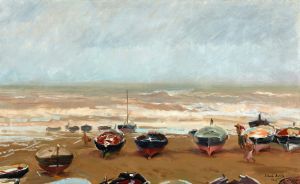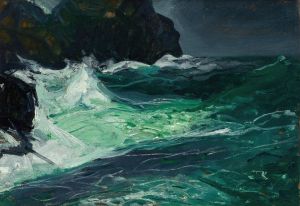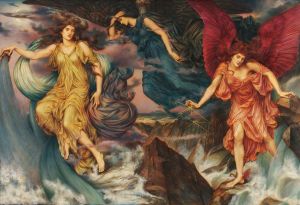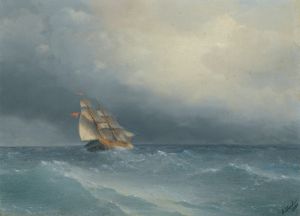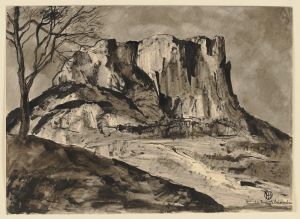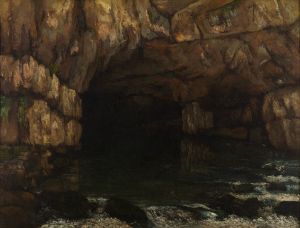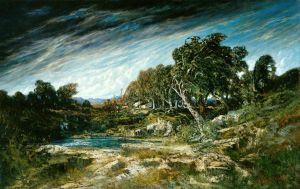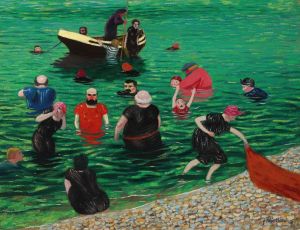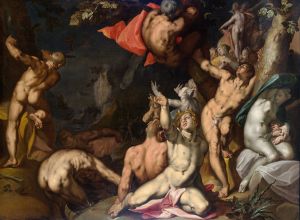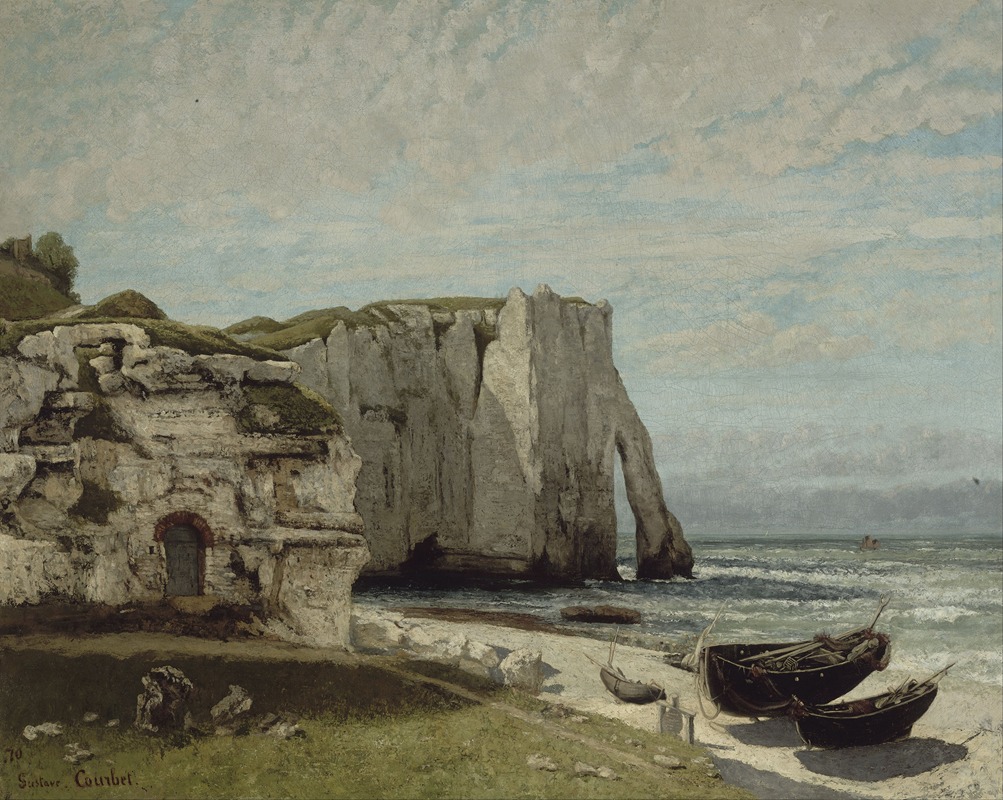
The Etretat Cliffs after the Storm
A hand-painted replica of Gustave Courbet’s masterpiece The Etretat Cliffs after the Storm, meticulously crafted by professional artists to capture the true essence of the original. Each piece is created with museum-quality canvas and rare mineral pigments, carefully painted by experienced artists with delicate brushstrokes and rich, layered colors to perfectly recreate the texture of the original artwork. Unlike machine-printed reproductions, this hand-painted version brings the painting to life, infused with the artist’s emotions and skill in every stroke. Whether for personal collection or home decoration, it instantly elevates the artistic atmosphere of any space.
"The Étretat Cliffs after the Storm" is an oil painting created by the renowned French artist Gustave Courbet in 1870. Courbet, a leading figure in the Realism movement, is celebrated for his commitment to depicting everyday scenes and landscapes with a focus on authenticity and detail. This particular work is a testament to his mastery in capturing the raw beauty and power of nature.
The painting depicts the dramatic cliffs of Étretat, a small coastal town in the Normandy region of France. Étretat is famed for its striking natural rock formations, including arches and needle-like structures, which have long been a source of inspiration for artists. Courbet's depiction of the cliffs is notable for its dynamic composition and the way it conveys the aftermath of a storm. The turbulent sea is rendered with vigorous brushstrokes, emphasizing the movement and energy of the waves crashing against the cliffs. The sky, still heavy with clouds, suggests the recent passage of a storm, adding a sense of drama and tension to the scene.
Courbet's approach to this landscape is characteristic of his realist style, which sought to portray subjects as they appeared in real life, without idealization. He was known for his ability to capture the essence of a scene, focusing on the interplay of light, texture, and form. In "The Étretat Cliffs after the Storm," Courbet employs a palette of earthy tones and muted colors, which enhances the naturalism of the scene and reflects the somber mood following the storm.
This painting is part of a series of works Courbet created during his visits to the Normandy coast. His fascination with the sea and its ever-changing nature is evident in these works, where he explores different weather conditions and times of day. The Étretat cliffs, in particular, provided a rich subject for Courbet's exploration of natural landscapes, allowing him to experiment with composition and the depiction of atmospheric effects.
"The Étretat Cliffs after the Storm" is housed in the Musée d'Orsay in Paris, which holds an extensive collection of 19th-century art. The museum's collection includes several of Courbet's works, offering a comprehensive view of his contribution to the Realism movement and his influence on subsequent generations of artists.
Courbet's work, including this painting, played a significant role in challenging the conventions of academic art in the 19th century. By focusing on real-life subjects and landscapes, he paved the way for future movements such as Impressionism, which further explored the themes of light and atmosphere. "The Étretat Cliffs after the Storm" remains a significant example of Courbet's ability to capture the sublime beauty of nature, highlighting his skill in rendering the physical world with both precision and emotion.
In summary, "The Étretat Cliffs after the Storm" is a quintessential example of Gustave Courbet's realist approach to landscape painting. Through his depiction of the dramatic cliffs and turbulent sea, Courbet captures the raw power and beauty of nature, reflecting his commitment to portraying the world with honesty and depth.





